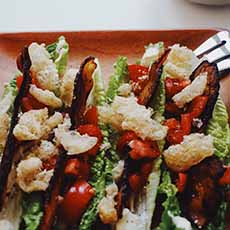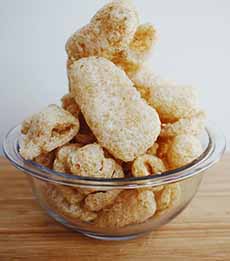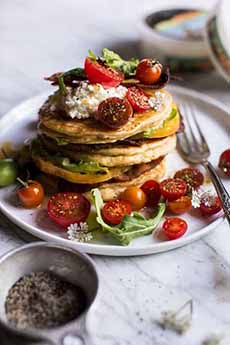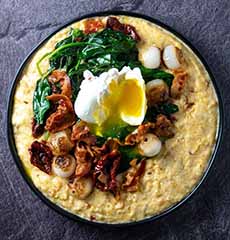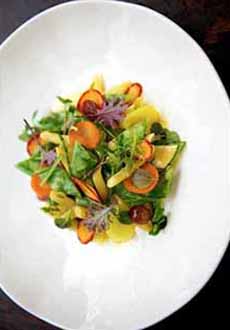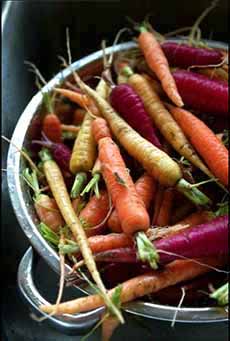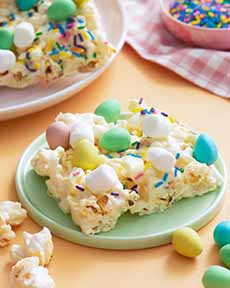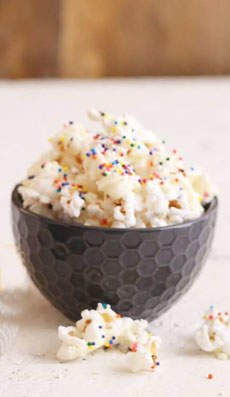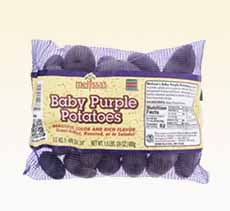|

[1] Elderflower Lemonade Martini. Here’s the recipe (all photos © Natalie’s Orchard Island Juice Company).

[2] Green Guava Lemonade Smoothie. Here’s the recipe.

[3] Lavender Guava Lemonade Mimosa. Here’s the recipe.
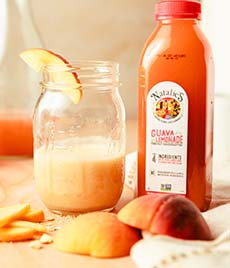
[4] Peach Guava Lemonade Smoothie. Here’s the recipe.
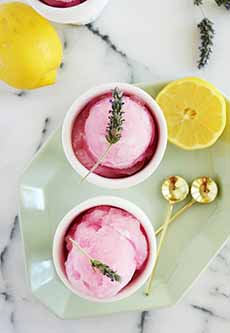
[5] Lemonade Lavender Sorbet. Here’s the recipe.

[6] Mango Lemonade Mousse. Here’s the recipe.

[7] Lemonade Blueberry Mini Cheesecakes. Here’s the recipe.

[8] Strawberry Lemonade Shortcake. Here’s the recipe.
|
|
Who doesn’t like a refreshing glass of lemonade? But did you know that you can make recipes with lemonade? Natalie’s Juice has almost 30 of them, below. You can see some of these recipes in the photos.
In addition to drinking lemonade from the bottle or glass, you can use it to make:
Cocktails
Mocktails
Smoothies
Desserts
Natalie’s makes lemonade in four delicious flavors, which provide even more opportunity for mixology and cooking:
Natural Lemonade
Guava Lemonade
Mango Lemonade
Strawberry Lemonade
You can easily add lemonade to recipes because the ingredients in lemonade—lemon, sugar, and other fruits—take the place of adding those ingredients individually.
NATALIE’S ORCHARD ISLAND JUICE
Natalie’s is one of the best fresh juices you can find. The line of fruit and vegetable juices starts with the finest fruits and vegetables available.
The juices are handcrafted in small batches to create clean, nutritious drinks, pasteurized at the minimum time and temperature required† to ensure quality and freshness.
Of course, there are no preservatives, no artificial ingredients, and no GMOs.
In addition to the lemonades, the Natalie’s line includes:
Citrus juices: blood orange, lemon, lime, orange, tangerine, and blends.
Exotic blends: Carrot Ginger Turmeric, Orange Beet, Pineapple Kale Zinc, and others.
Holistic juices: crafted with functional botanicals, adaptogens, spices & superfood ingredients to promote health, wellness & nutrition.
Who Is Natalie?
Natalie is the oldest daughter of Marygrace Sexton, who created Natalie’s Orchard Island Juice Company.
The wife of a fourth-generation Florida citrus grower, Marygrace dreamed of producing fresh-squeezed, minimally processed juice for store purchase. Because, unless she could purchase it from a roadside stand, she had to squeeze her own juice at home.
That was more than 30 years ago. Now carried by the best food stores in the U.S., Natalie’s is a boon to all of us who don’t want to “squeeze our own.”
> Here’s where to buy Natalie’s Juice near you.
> Check out the Natalie’s Orchard Island Juices website.
> The history of lemons.
> The different types of lemons.
> The history of lemonade.
LEMONADE RECIPES WITH NATALIE’S LEMONADE
COCKTAILS
Elderflower Lemonade Martini
Ginger Mint Lemonade Cocktail
Green Slime Lemonade
Lavender Guava Lemonade Mimosa
Mango Lemonade & Guava Lemonade Bellini Flight
Mango Lemonade Mojito
Mango Lemonade “Ranch Water”
Orange Mango Ale Slushies
Red White & Blue Sangria
Strawberry Lemonade Cosmo
Strawberry Lemonade El Diablo
Strawberry Lemonade Hurricane Slushie
Strawberry Lemonade Peeps Martini
Strawberry Pineapple Jalapeño Paloma
SMOOTHIES & NON-ALCOHOLIC DRINKS
Golden Milk Mango Lemonade Smoothie
Green Guava Lemonade Smoothie
Mango Lemonade Granita
Mango Lemonade & Guava Lemonade Spritzers
Peach Guava Lemonade Smoothie
Pimm’s Cup Mocktail
Pink Peppercorn Lemonade
Strawberry Lemonade Punch
DESSERTS
Guava Lemonade Sorbet
Lemon Lavender Sorbet
Mango Lemonade Mousse
Mango Lemon Pops
Mini Lemonade Blackberry Cheesecake
Strawberry Lemonade Easter Cupcakes
Strawberry Lemonade Shortcake
You’ll never look at a bottle of lemonade the same way again!
LEMONADE CELEBRATIONS
There are actually two lemonade day celebrations.
Lemonade Day is May 1st this year† (it’s the first Sunday in May). It was started by a not-for-profit that promotes entrepreneurialism in kids.
The program helps communities of need introduce children to entrepreneurship through starting their own lemonade stands.
National Lemonade Day on August 20th can also be an opportunity to get kids to set up a lemonade stand. But for those of us without young’uns, it’s an opportunity to enjoy a cold, refreshing, sweet-and-tangy glass of lemonade.
________________
*Pasteurization is the process of heat-processing liquid or food to kill bacteria that may be harmful to people if they consume it—think salmonella, listeria, shigella, e. coli, etc. cold-pressed (a method that uses a hydraulic press to extract juice and gives juice a longer shelf life than There is a risk to drinking raw/unpasteurized juices that have never been cooked, heated, or steamed). The nutrients are the same whether the juice is pasteurized or unpasteurized [source].
There are two main types of pasteurization for juices: heat pasteurization and high-pressure pasteurization (HPP), which uses high pressure instead of heat to kill microbes. Heat pasteurization is less expensive and thus most common, but can create a change in flavor that is why most store-bought juices taste different from freshly squeezed juices. The more costly HPP gives juices a more fresh flavor.
†For upcoming years: 7 May 2023, 5 May 2024, 4 May 2025, 3 May 2026, 2 May 2027, 7 May 2028, 6 May 2029, 5 May 2030.
|
